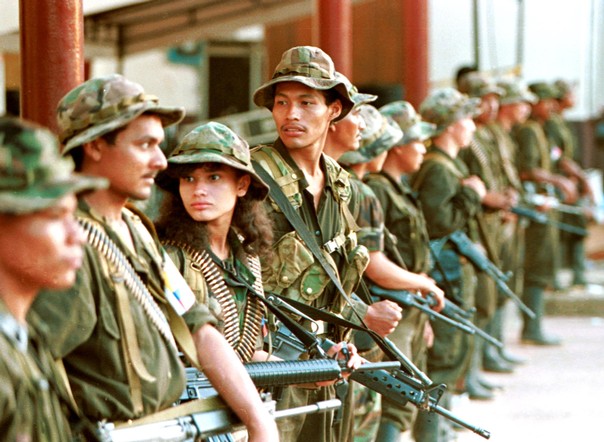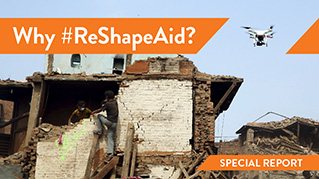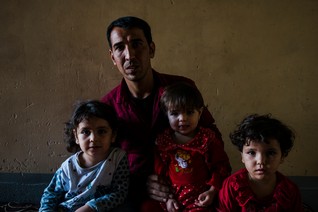PHOTO BLOG: Stops and starts on Colombia’s path to peace, 1999 to 2013
Source: Fri, 5 Jul 2013 12:00 PM
Author: Anastasia Moloney
-


January 1999 - The conditions under which the last failed peace talks took place during the government of President Andres Pastrana were quite different from the peace process taking place in Havana today.
In this photo, rebels from the Revolutionary Armed Forces of Colombia (FARC) stand guard for hours before top guerrilla warlords meet President Pastrana to formally launch peace talks in the town of San Vicente del Caguan in Colombia’s southeast. The town was part of an area the size of Switzerland that the government declared a demilitarised zone, which was off limits to government troops, in a bid to end a war that started in 1964.
During the 1990's, the FARC was at the height of its power, controlling swathes of the country and boasting nearly 20,000 fighters.
-


February 2001 - President Andres Pastrana (left) meets with the FARC’s founder and revered leader Manuel “Sure Shot” Marulanda for the first time inside the demilitarised zone. Seven years later, rebel chief Marulanda died of a heart attack.
Pastrana ends peace talks after three years of arduous stop-start negotiations with the FARC on Feb. 20, 2002. He accuses the rebels of using the demilitarised zone to regroup, take hostages, continue drug trafficking and attack government troops.
-


September 2012 - During a televised address to the nation, Colombia’s President Juan Manuel Santos took the country by surprise when he announced that the government and FARC rebels would start formal peace talks within weeks in Oslo, before moving to Havana. His announcement followed months of secret exploratory negotiations with the rebel group.
“There are people like me that don't know a single day of peace," Santos said from the presidential palace in Bogota. "We have to take the dream of living in peace and make it a reality."
Santos partly initiated the peace talks on a bet that the FARC had been so weakened by the government's 10-year, U.S.-backed offensive against the group that its leaders were ready to negotiate an end to the fighting. It remains to be seen whether his high-risk bet will pay off.
-


October 2012 - A decade after the previous failed peace talks, the Colombian government and FARC rebels meet at the Hurdalsjoen Hotel near Oslo to formally kick off new peace negotiations.
At the press conference, chief negotiators from both sides sit between diplomats from Norway and Cuba, the two countries acting as guarantors for the peace process.
FARC’s lead negotiator Ivan Marquez uses the press conference as an opportunity to give a 35-minute fiery speech laden with Marxist rhetoric, attacking Colombia’s "corrupt oligarchy”, and the "vampires" of international oil and mining companies.
-


May 2013 - FARC negotiator and veteran rebel commander Pablo Catatumbo (left) shakes hands with one of the government’s negotiators Frank Pearl during a press conference in Havana to mark a historic partial agreement reached on land reform.
Both sides say the accord aims to give poor farmers better access to land and promote economic and social development in neglected rural areas across Colombia.
Poverty and unequal land redistribution were key reasons that motivated the FARC to form a Marxist-inspired agrarian reform movement and launch its insurgency nearly five decades ago.
"What we have agreed to in this accord will be the beginning of radical transformations in the rural and agrarian reality of Colombia, with equality and democracy," said the joint statement from both sides.
































